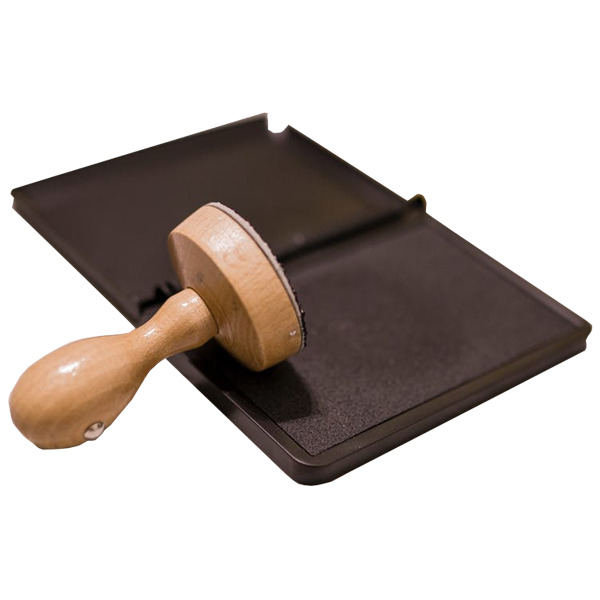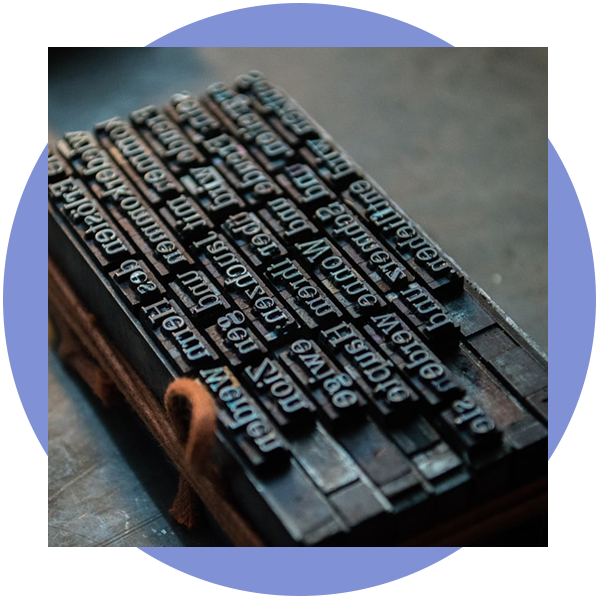
Vulcanization:
Each experienced stamp maker has his or her own technique for vulcanization of rubber stamps, and if a technique produces good results, there is no reason to change. However, the following suggestions may prove useful:
Optimum results are achieved at 310 degrees F (154 degrees C) for a minimum of 6 minutes for 0.150" thickness of rubber or less. Additional time may be necessary for thicker rubber. Vulcanization temperature should not exceed 340 degrees F (171 degrees C).
All platen surface temperatures must be verified with a thermocouple or an accurate thermometer. Normally bearers should be used to prevent damaging the printing plates during vulcanization and to give a controlled thickness to the stamps. A pressure of 10-20 tons or 20,000 to 40,000 PSI on the ram would be considered normal. After the rubber has been placed onto the matrix board (i.e. on platens), the press must be closed and pressure applied immediately.
Rolling and Pressure:
All pressure should be sufficient to make the bearer bars fixed and rigid. Extreme caution should be taken to prevent backing off the platen plates during vulcanization. This pressure reduction may cause air bubbles and/or sponginess if the plates back off or pressure is reduced during the cure cycle.
The thickness of rubber from the roll should be the same thickness as the total thickness of the type (or relief of the character) plus the backing rubber. If the thickness is insufficient (i.e. backing plus type), air bubbles and no-frills may be present.

Rolling and Pressure:
All pressure should be sufficient to make the bearer bars fixed and rigid. Extreme caution should be taken to prevent backing off the platen plates during vulcanization. This pressure reduction may cause air bubbles and/or sponginess if the plates back off or pressure is reduced during the cure cycle.
The thickness of rubber from the roll should be the same thickness as the total thickness of the type (or relief of the character) plus the backing rubber. If the thickness is insufficient (i.e. backing plus type), air bubbles and no-frills may be present.
Specifications:
Usage and Storage Conditions:
Storage Precautions:
Uncured stamp rubber will retain its properties for up to one year if stored away from direct sunlight and at temperatures below 70 degrees F (21 degrees/34 degrees C). Longer shelf life may be obtained by refrigeration at above 32 degrees F (0 degrees C). Do NOT freeze.
Accidental vulcanization through exposure to heat or through excess aging will make the rubber useless for stamp molding. Avoid storing unvulcanized stamp rubber gum near heat sources such as radiators, furnaces, hot attics, or in direct sunlight.
Date all cartons of stamp rubber when received and rotate your stock as the rubber may vulcanize slightly day by day. It is not unusual for stamp rubber gum to be good for more than one year when stored properly.

